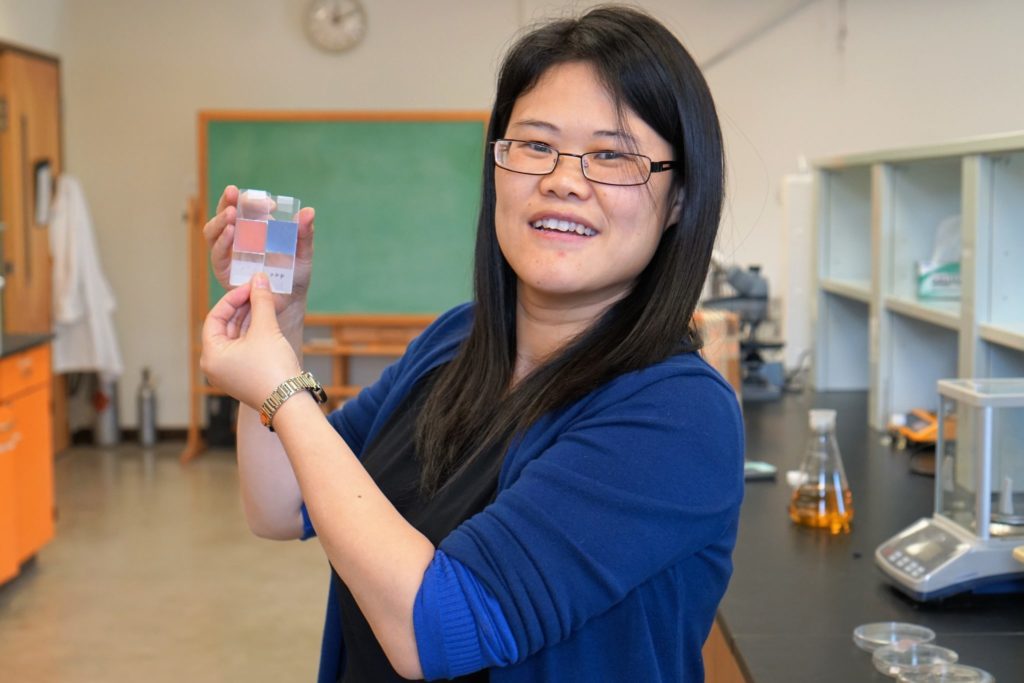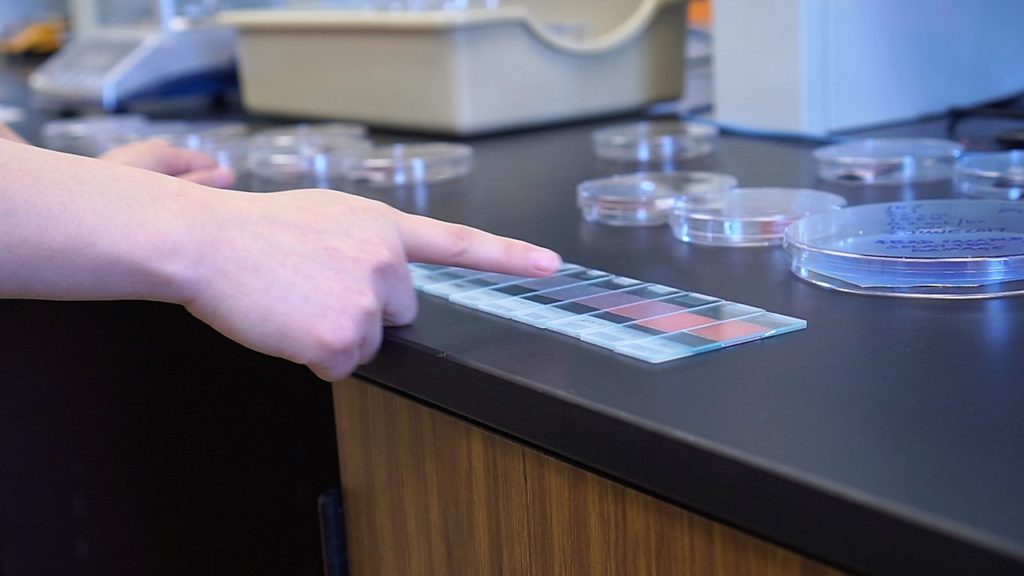Have you ever wrapped a wound with a bandage or taken antibiotics for an infection? Do you use natural gas to heat your home? If you answered yes, odds are the diverse developments in nanotechnology research at Colorado State University may eventually benefit you.

Assistant Professor Vivian Li in the Department of Design and Merchandising has several research projects revolving around nanotechnology and fiber science. She also teaches classes in textile science, an important component of the apparel and merchandising major in the department.
Early research
When Li began graduate school at Cornell University, she starting working with a professor there on fiber science research. Fiber science soon became Li’s main interest and drive for completing her Ph.D.
Li began to research how fiber was lubricated during the spinning process. She wanted to fully understand how the material works on a molecular level and what the lubrication process actually does as a protection layer. This was her very first introduction to how fiber science works on the nano scale.
Research with nanostructured materials
The Department of Design and Merchandising renovated a new lab for Li for her nanotechnology research. The additional space allows her to test nanostructured materials more efficiently and effectively.
Nanoparticles are particles that are extremely small – between 1 and 100 nanometers in size. One nanometer is equal to one billionth of a meter. Specialized equipment is needed for working with these nanoparticles.
With the addition of the space, Li is now working with a new microscope that will make understanding these nanoparticles a lot easier. This atomic force microscope (AFM) allows Li to see a 3D virtual model of the particle she’s developed in her lab, giving her a closer look at what’s happening to the particle.
The AFM is also being used by different departments such as Chemistry, Biology, Chemical Engineering, Mechanical Engineering and Biomedical Engineering for organic and inorganic materials research.
Nanoparticles in the subsurface
After receiving her Ph.D. in fiber science in 2009, Li was working in the Department of Earth and Atmospheric Science at Cornell University, where she started her nanoparticle tracer project. When she came to CSU in 2013, she continued to develop and test the nanoparticles alongside CSU faculty member William Sanford in the Department of Geosciences.
The overall objective of the research project is to develop nanoparticles that can be injected into the subsurface of oil reservoirs to look for oils. This allows the process of extracting oil and gas to be much more efficient.
With current tracing technology, the oil and gas industry is producing only a small percentage of the oil and gas that’s out there. “Currently, the average production for gas and oil industry is 30 to 50 percent of the product. This means that 50 to 70 percent is left underground,” Li explained.
The synthesis that Li developed is a fairly cheap method that could allow industries to trace particles without any false indicators. Unlike chemical tracers, which can get trapped in the subsurface because some of them diffuse into tiny cracks where fluid does not, the fluorescent carbon nanoparticles are a lot easier to track. By staying in the fluid flow, these nanoparticles can track oil accurately because they can track flow in the subsurface.
Now that her nanoparticle has been created, Li and her collaborator Sanford are looking for more opportunities for field testing to observe how the nanoparticles actually behave in the field. Once tested and perfected, these nanoparticles will be made available and more accessible to the industry.
Nanotechnology in health care
The focus on textile science has opened the nanotechnology door for broader applications, such as in the medical field.
Li is working alongside two other researchers in the Departments of Chemistry and Microbiology at CSU to create nanofibers that can be used on a bandage or dressing. Through a long process of lab synthesizing, Li has made and practiced with nanofibers that indicate whether a wound has developed a bacterial infection.
The nanofibers are less than 100 nanometers in size, allowing the nanotechnology to accurately detect where the bacterial infection is located. The fibers start as a blue color and change to a pinkish or reddish color if bacteria are present. This early visual detection can be useful in many different applications.
For reference, there are 90,000 deaths a year caused by an infection acquired in a hospital or health-care facility. With this nanotechnology, bacterial infections could be recognized much more quickly, allowing patients to receive treatment right away. Recognizing whether a bacterial infection is present can also help doctors know when antibiotics are needed and help reduce overprescribing, which can lead to antibiotic-resistant infections.
While Li is still working on the science behind how the bacteria triggers the color change, she knows how to vary the size of the nanofibers for accurate bacteria detection, and she understands the mechanism behind the color change.
“I think it’s very important for scientists to know and understand the actual application of nanofibers so we can find out what is happening when the color changes. This can help us modify and test the nanofibers more efficiently,” Li said. “Once we learn that, we can help make the fiber relevant for many different applications.”
This could revolutionize one aspect of the health-care industry and benefit groups like the military, senior living communities, nursing homes and many other areas that face problems with bacterial infections.
Next steps
There are many other research developments Li is working on with nanotechnology and fiber science that she hopes will contribute to the efficiency of the nanostructured materials. Ideas like an all-in-one solution for bacterial infection or other applications of nanofibers in a restaurant setting for cleaning microbial contamination are all being considered and tested in her lab.
“There is a constant need to upgrade the functions and performance of textiles for the improvement of human living, protection and well-being,” Li said. “My research is aimed at addressing this need by focusing on the development of multifunctional textile materials through the application of nanotechnology. Advances in nanotechnology provide unprecedented opportunities in the textile industry for improving performance and creating new functionalities.”
[youtube https://www.youtube.com/watch?v=loshzCE-8Yg?rel=0&w=672&h=378]
The Department of Design and Merchandising is part of CSU’s College of Health and Human Sciences.
